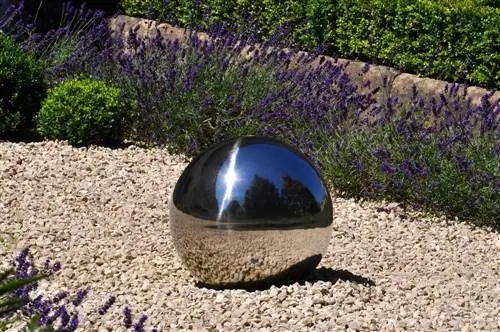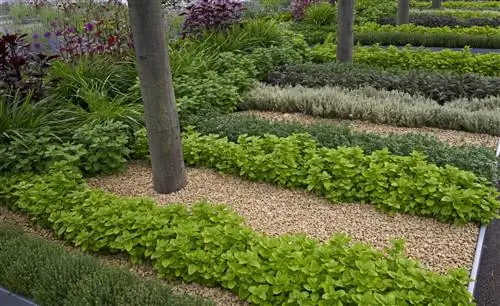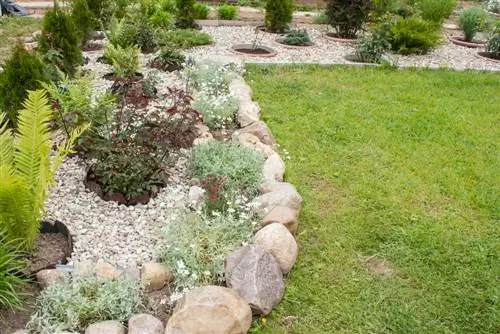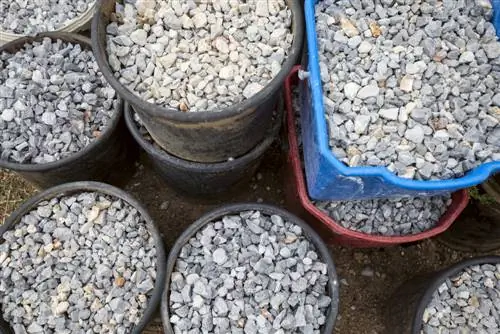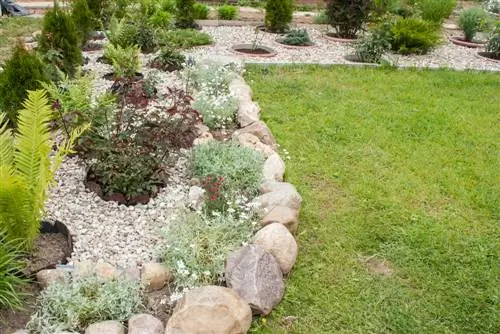- Author admin [email protected].
- Public 2023-12-16 16:46.
- Last modified 2025-01-23 11:21.
Gravel beds are also becoming increasingly popular in German gardens and front gardens. Hardly any garden lover can escape the flair of the interesting combination of stones and ornamental plants, which are inspired by Alpine, Mediterranean or Japanese natural areas and green spaces. However, there are a few things to consider when designing so that the future care effort is actually limited and the plants still thrive.
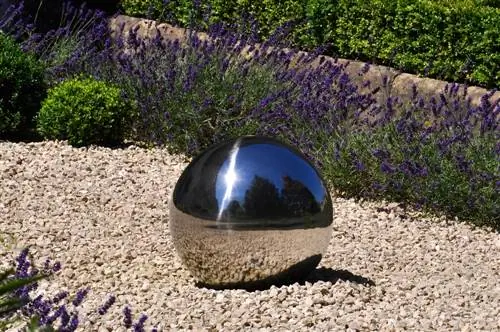
How do I design a gravel bed in the garden?
To design a gravel bed, first choose a style (Japanese, alpine, Mediterranean or modern), suitable filling material (e.g. quartz, bas alt, glacier gravel or rose quartz) and a boundary (concrete stones or metal rails). The planting should correspond to the chosen look.
What should the bed look like?
Even before the actual installation, you must be clear about which natural area the later look should be based on. This is the only way to create a harmonious, self-contained overall impression. The following variants are the most commonly encountered:
- Japanese style gravel bed.
- Alpine dry and semi-dry lawns.
- A bed with a Mediterranean flair.
- A formal and very modern looking gravel bed.
How is this effect achieved?
While in Japanese gardens the interplay of stones, water elements and plants gives the gravel bed its special charm, the characteristic planting determines the look of the Mediterranean bed.
Gravel banks and large stones scattered randomly, in addition to the typical mountain plants, imitate the natural areas in the mountains. This gravel bed, which is ideally laid out at a slight slope, is often referred to as a rock garden.
Strongly structured and extremely reservedly planted, the formally designed bed presents itself very well with modern garden design.
The right filling material
The effect of the bed is largely determined by the gravel chosen. In addition to decorative gravel with a rounded surface, you can also use angular decorative chippings. It appears less harmonious; But that in particular has its own charm.
The most popular types of gravel include:
- precious white quartz
- colorful polished bas alt
- colorful mixed glacier gravel
- Rose Quartz
If you want a clear demarcation from paths and surrounding garden areas, you can also add edging stones. Simple concrete stones or metal rails (€40.00 on Amazon) are ideal as a border for the gravel bed. This means that later mowing of the adjacent green area will not be a problem.
Tip
A gravel bed does not necessarily have to be created in a sunny, rather dry garden area. A stream that is included in the bed looks very attractive. Large stones imitate the natural wet area to which the planting is coordinated.

